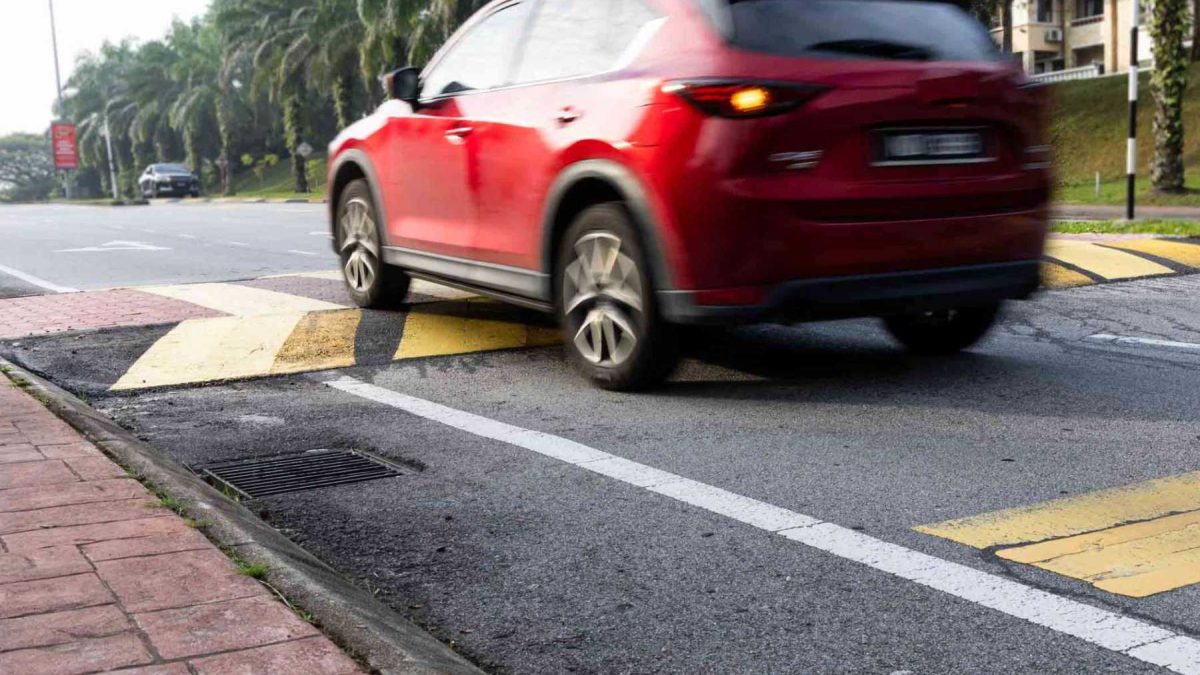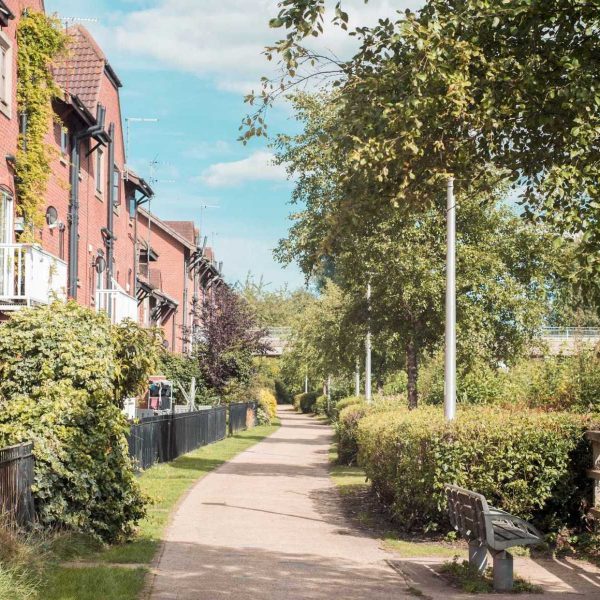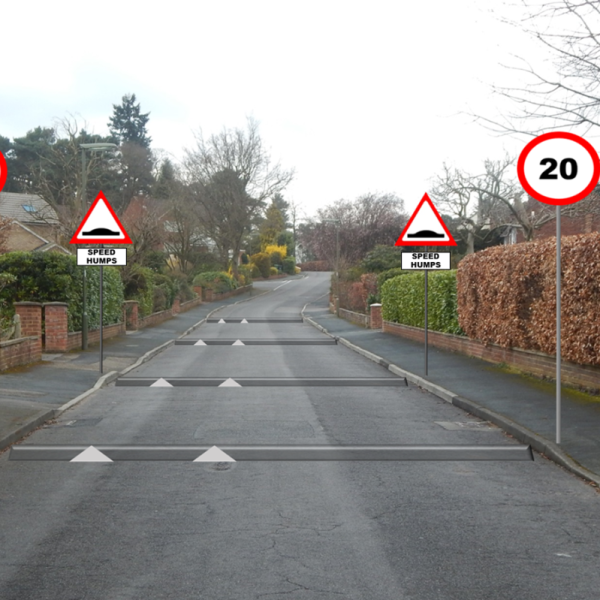
The Evolution of Speed Bumps
Speed bumps, those ubiquitous traffic calming features that gently remind us to slow down, have a more intricate history and a potentially innovative future than one might initially assume.
From their inception to the present day, and looking ahead to future developments, the journey of speed bumps is a testament to human ingenuity in the pursuit of safer roads. This article delves into the evolution of speed bumps, exploring their origins, how they’ve adapted to changing times, and what the future might hold for these essential components of urban planning.
Humble Beginnings
The concept of deliberately obstructing a road to slow traffic might seem counterintuitive, yet it stems from a simple need: safety. The first recorded instance of something resembling a speed bump dates back to the early 20th century. Initially, these were not the speed bumps for sale that we know today but rather large, unyielding obstacles intended to protect pedestrians from the burgeoning number of motor vehicles. Over time, these obstructions evolved into more refined forms, designed to slow vehicles without causing undue damage or discomfort.
Design Refinement and Global Adoption
The mid-20th century saw the advent of the modern speed bump, designed to be an effective speed deterrent without being a hazard. The design was standardised to ensure it was high enough to slow down vehicles but not so aggressive as to cause damage. This period also marked the beginning of global adoption, with countries around the world integrating speed bumps into their road safety arsenals. Each region adapted the basic concept to fit local conditions, leading to variations like speed humps, which are broader and more gradual than their bump counterparts.
Material Innovations and Technological Integration
As materials science advanced, so too did the construction of speed bumps. Initially made from asphalt or concrete, modern speed bumps have embraced a variety of materials, including rubber, plastic, and even recycled composites. These materials offer not only durability and flexibility but also the opportunity for innovation, such as modular designs that can be easily installed, removed, or reconfigured based on changing traffic patterns.
The integration of technology has further expanded the capabilities of speed bumps. Some modern iterations are “smart,” equipped with sensors that can adapt to traffic conditions, lowering to allow emergency vehicles to pass without impediment or generating energy from the pressure of passing vehicles.
Looking to the Future
The future of speed bumps is poised on the cusp of further innovation. Concepts currently in development include speed bumps that only activate when a vehicle exceeds a certain speed, thereby not penalising drivers adhering to speed limits. Another promising area is the use of biodegradable and eco-friendly materials, reducing the environmental impact of speed bump production and deployment.
Moreover, as autonomous vehicles become more prevalent, the design and function of speed bumps may evolve to communicate more effectively with these vehicles, perhaps shifting from physical deterrents to digital signals that instruct the vehicle to slow down.
From rudimentary roadblocks to sophisticated traffic calming solutions, speed bumps have come a long way. Their evolution is a mirror to broader trends in road safety, urban planning, and technological advancement. As we look to the future, speed bumps will undoubtedly continue to adapt, embodying the balance between maintaining safety and facilitating efficient urban mobility. Their journey is far from over, and the roads of tomorrow will likely see even more innovative approaches to this age-old challenge.
Modern Cobbled Quick-Drying Speed Bumps
As we delve further into the future possibilities of speed bump innovation, a particularly intriguing development is the advent of modern cobbled quick-drying speed bumps. These combine the timeless aesthetic of traditional cobblestones with cutting-edge material science, offering a solution that is both visually appealing and highly functional.
Blending Tradition with Innovation
Modern cobbled quick-drying speed bumps are a nod to the past, with their surface mimicking the classic cobblestone look that is synonymous with historic urban charm. However, beneath this traditional façade lies a highly innovative approach. The quick-drying technology used in these speed bumps allows for rapid installation and curing, significantly reducing the downtime typically associated with road works and minimizing disruption in busy urban areas.
This quick-drying aspect is particularly advantageous in climates prone to sudden weather changes, where traditional installation methods might face delays. By setting quickly, these speed bumps maintain the project timeline and ensure that the safety measures are in place without significant delays.
Material Advancements
The materials used in these modern cobbled bump strips are a marvel of current engineering. They often incorporate eco-friendly, durable composites that can withstand heavy traffic and adverse weather conditions. Moreover, these materials can be engineered to provide the optimal level of friction, ensuring effective speed reduction while maintaining safety for all road users, including cyclists and motorcyclists.
Aesthetic Integration and Community Acceptance
One of the challenges with traditional speed bumps is their often intrusive appearance, which can detract from the aesthetic of a neighborhood or historic area. The cobbled design of these modern speed bumps offers a solution, integrating seamlessly into a variety of landscapes without compromising the visual harmony of the surroundings. This aesthetic consideration can lead to higher community acceptance, as the speed bumps are seen as enhancing the area’s character rather than detracting from it.
Eco-Friendly and Sustainable
Looking towards a more sustainable future, these modern cobbled quick-drying speed bumps align with environmental goals. Many are made from recycled materials and designed for longevity, reducing the need for frequent replacements and lessening the environmental impact associated with their lifecycle.
The future of traffic calming is bright with innovations like modern cobbled quick-drying speed bumps, which represent a confluence of aesthetic appeal, rapid deployment, and sustainable design. As urban planners and communities seek solutions that balance safety, efficiency, and environmental stewardship, these advancements offer a promising path forward. By embracing such innovations, we can look forward to safer, more beautiful, and more sustainable urban environments.
















